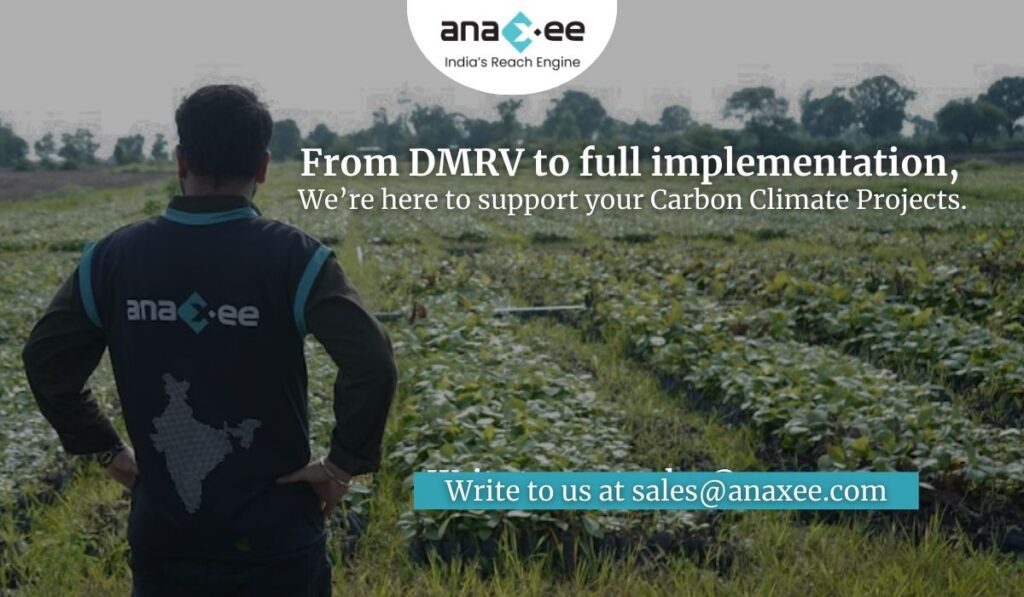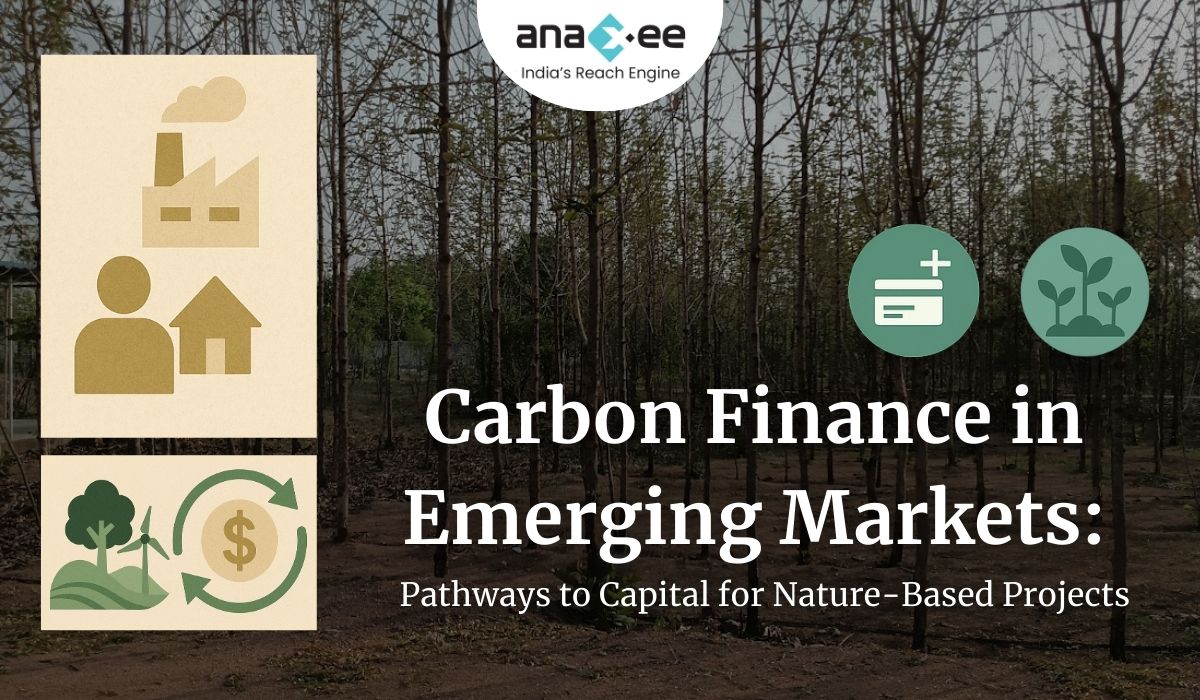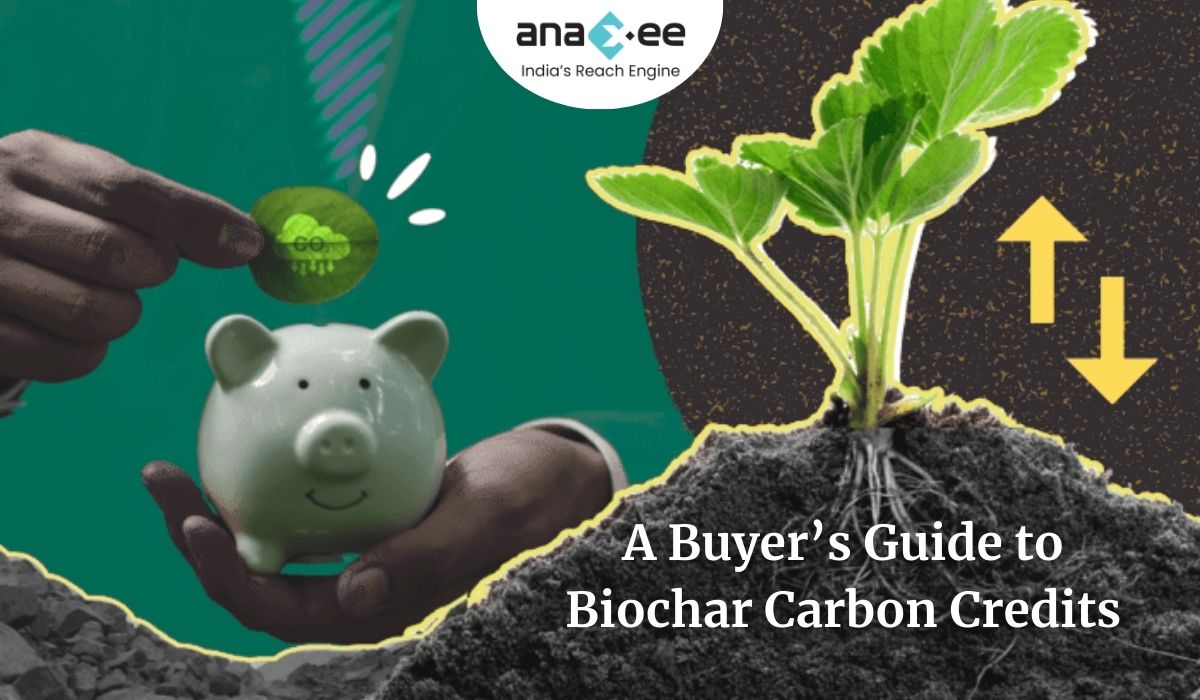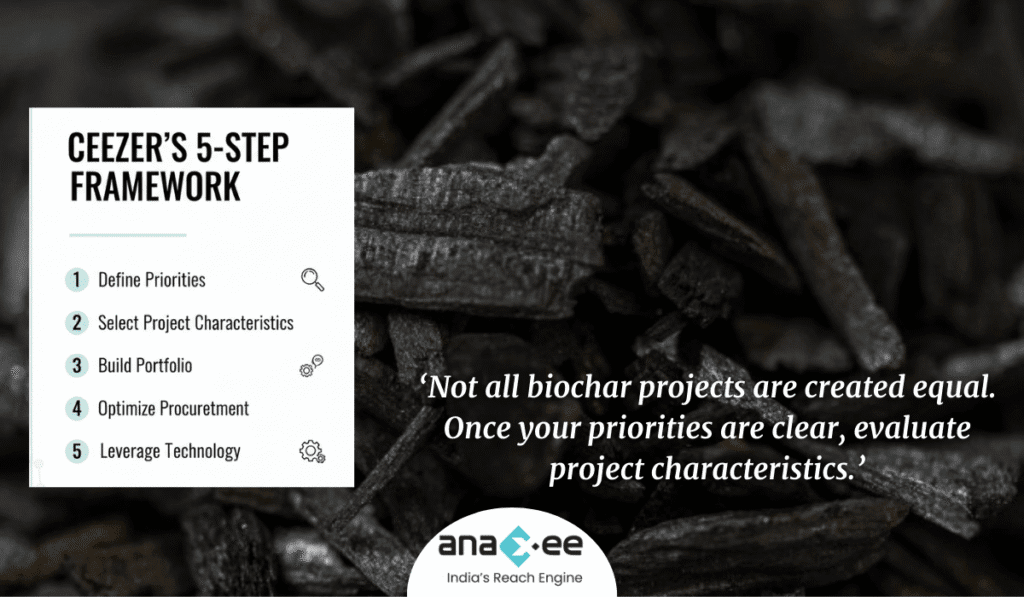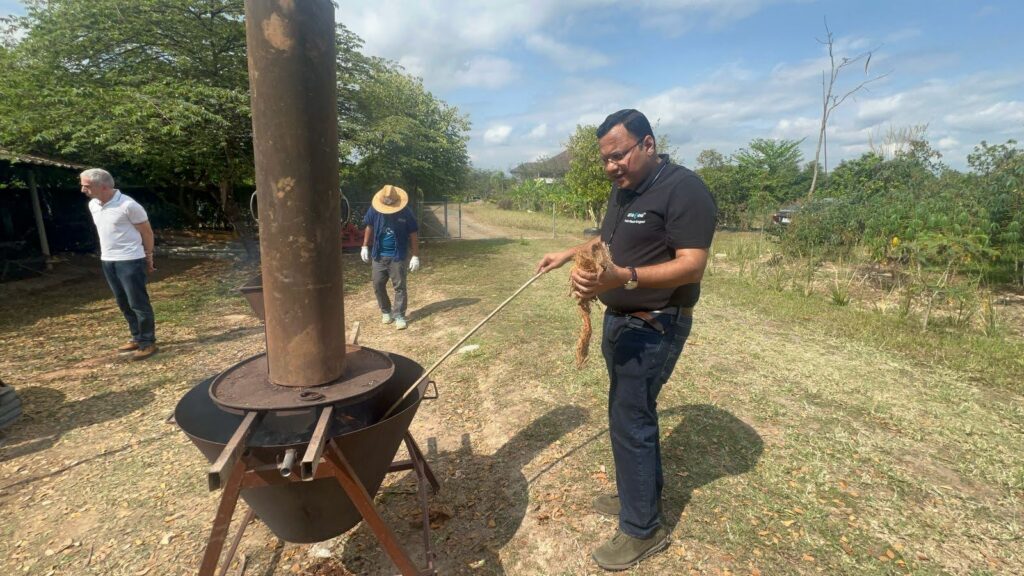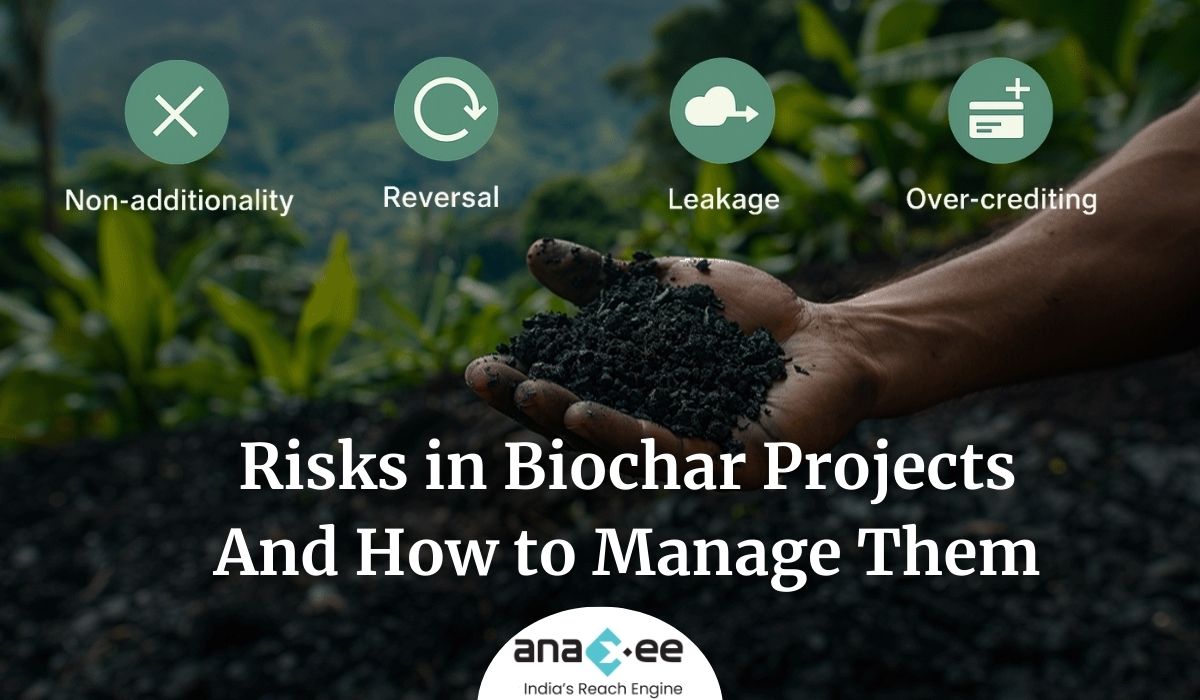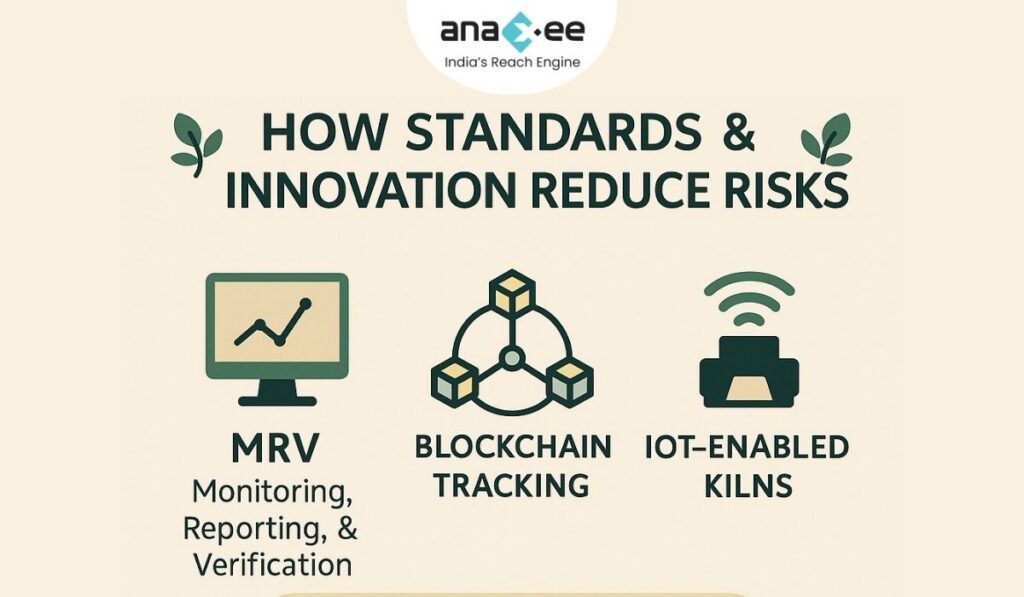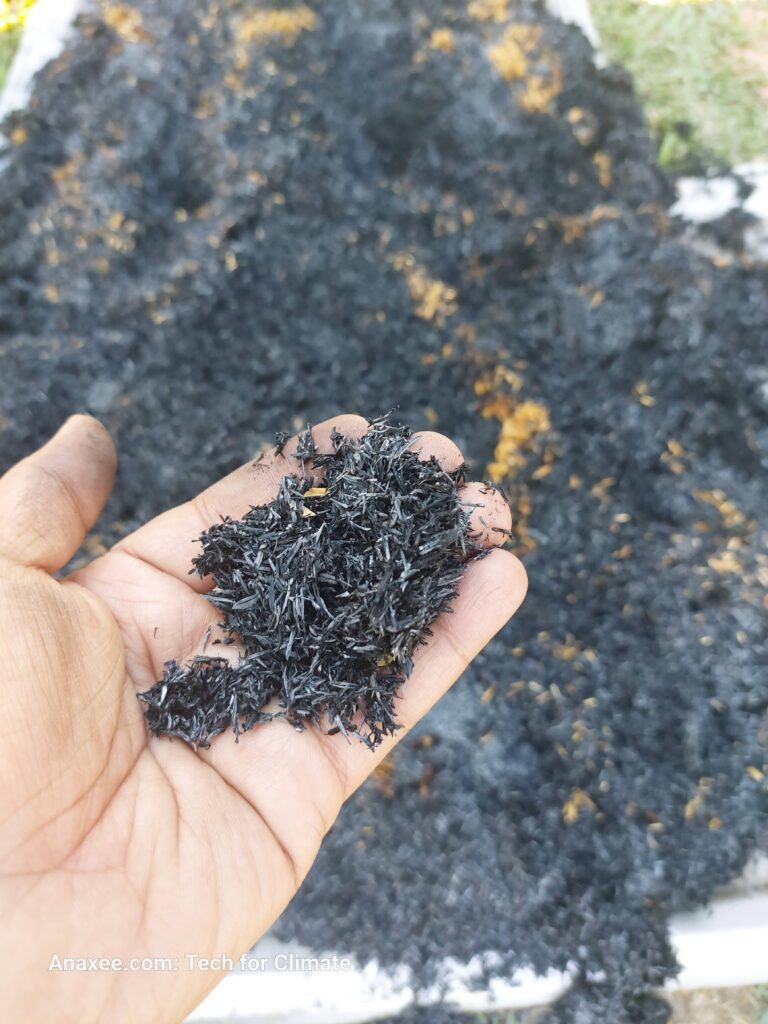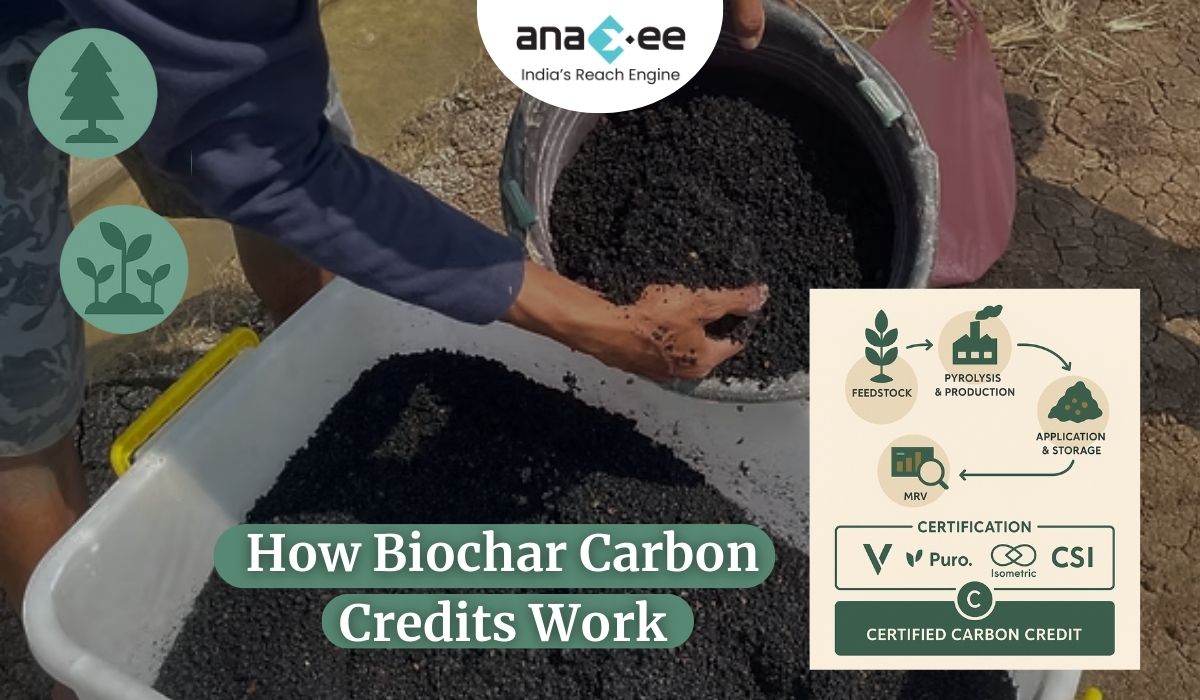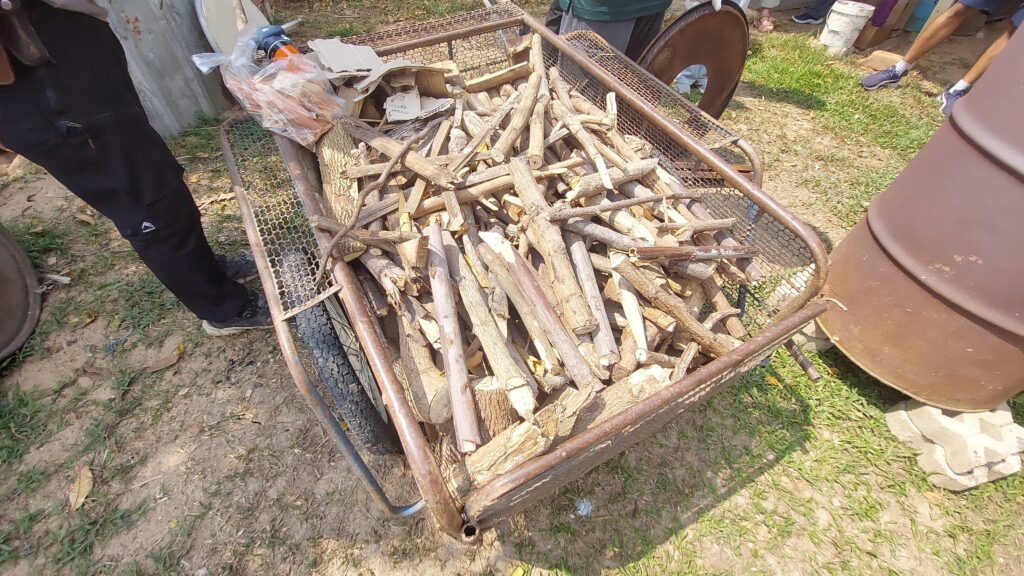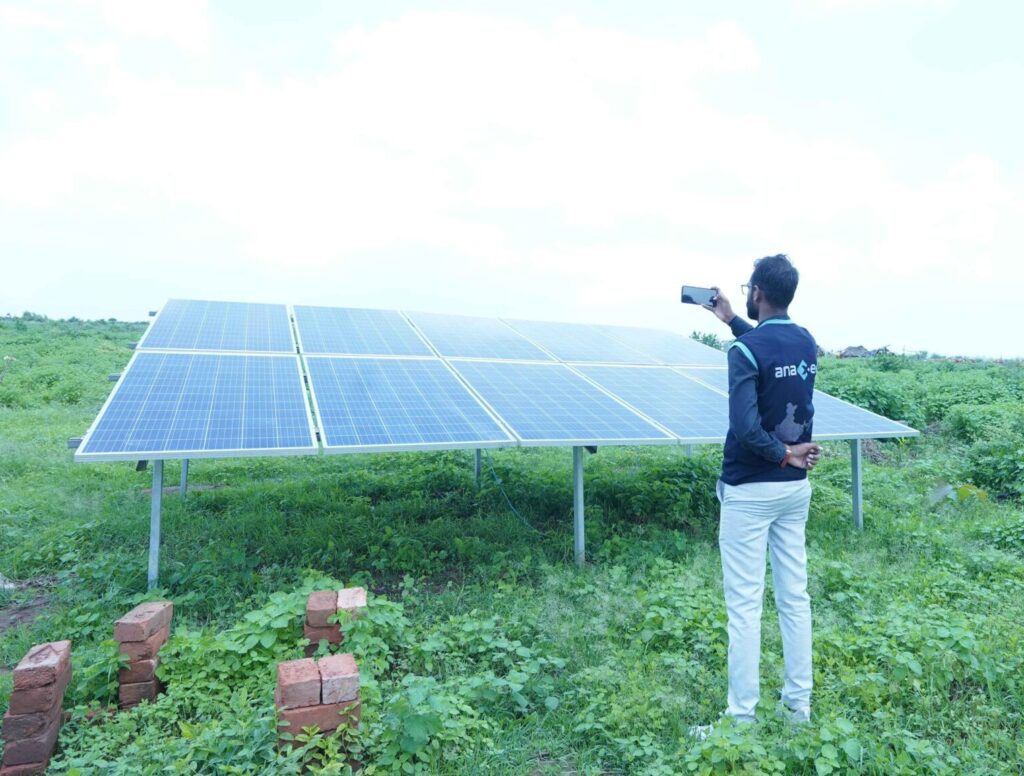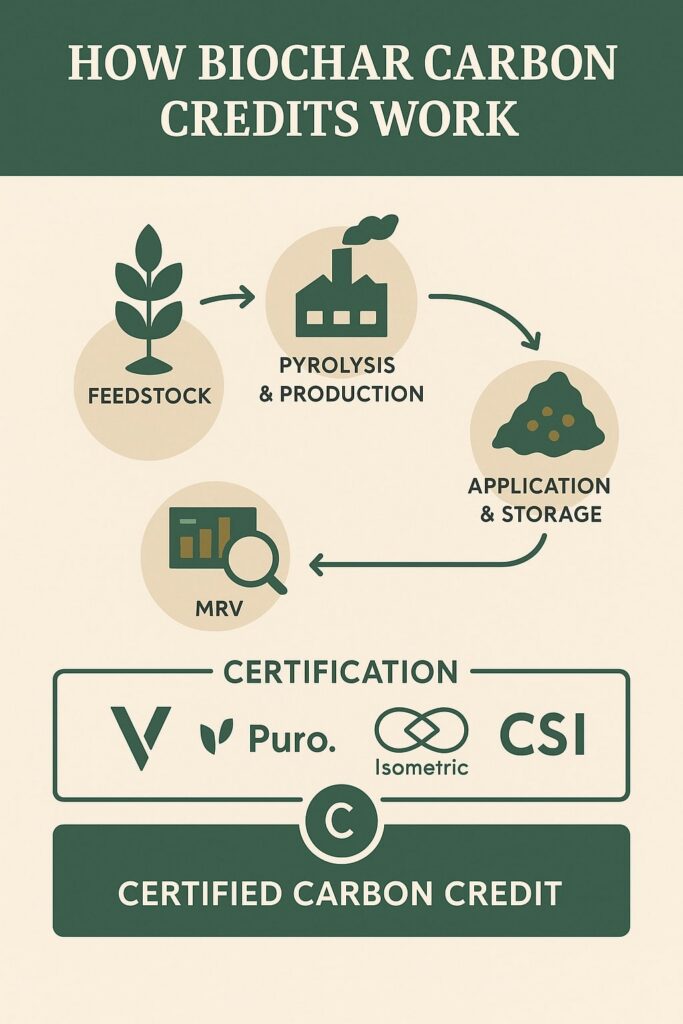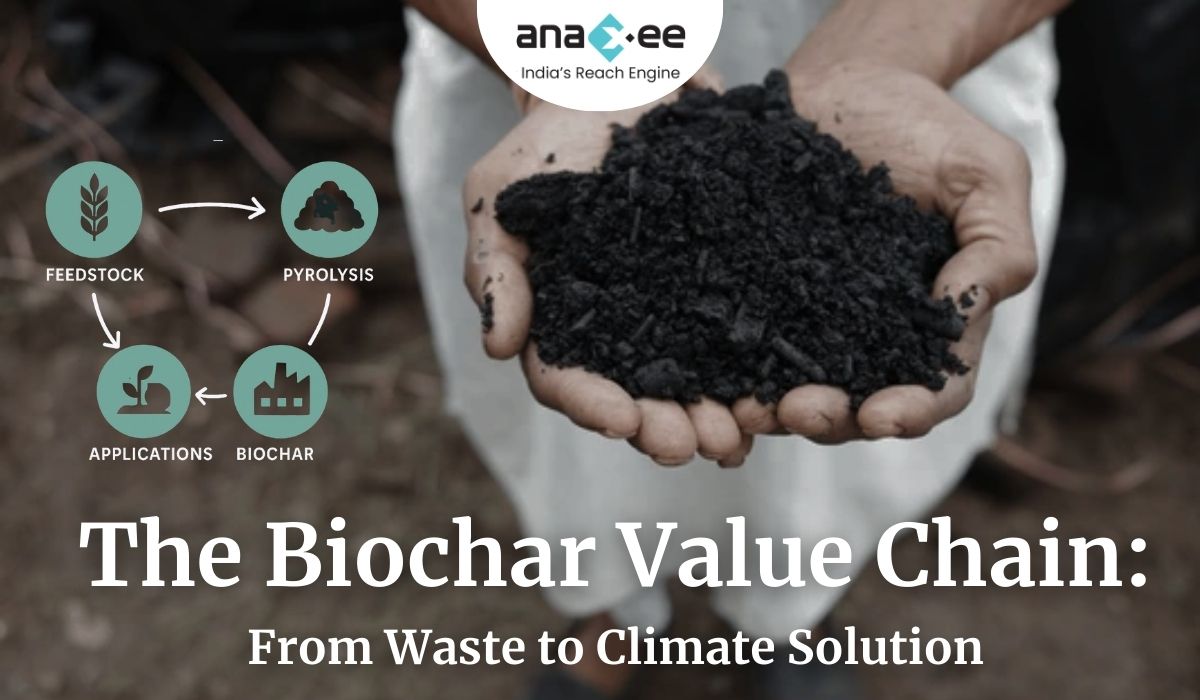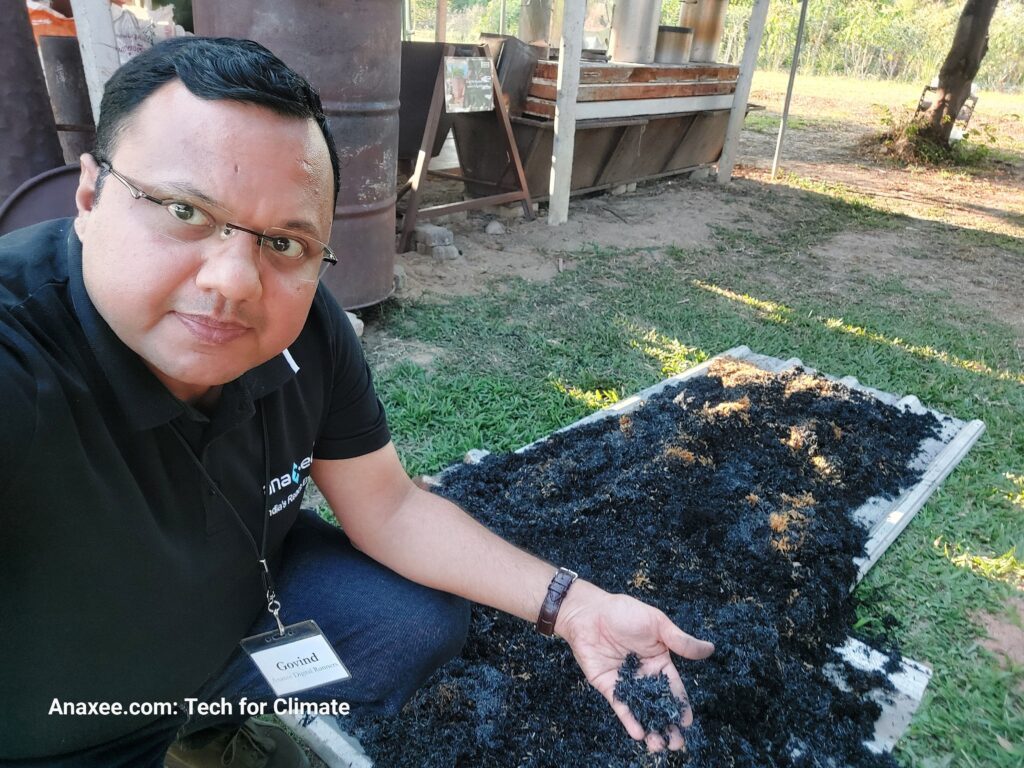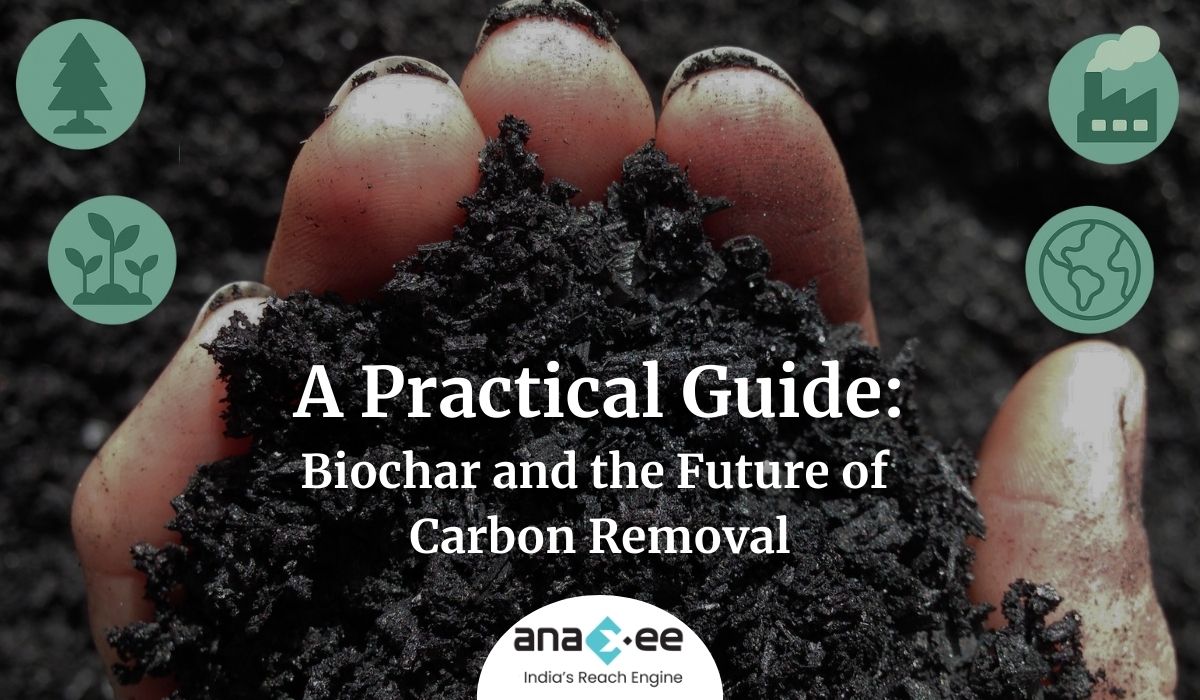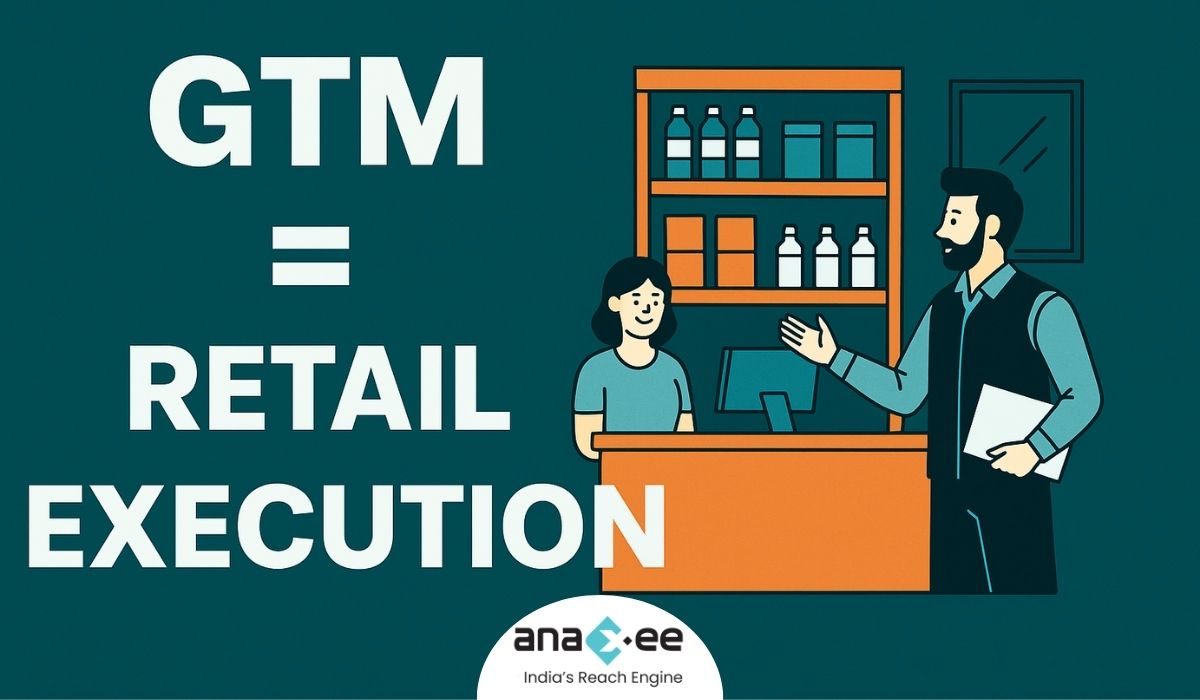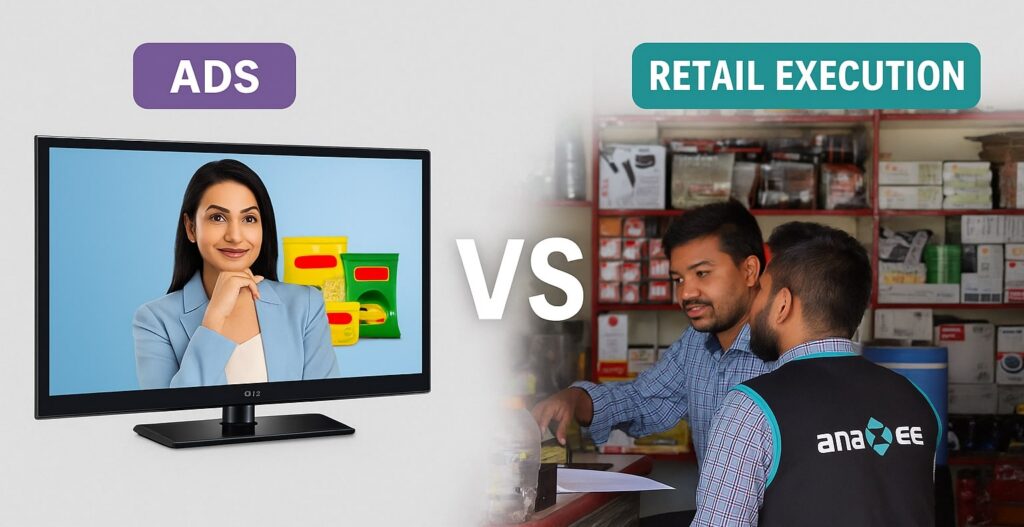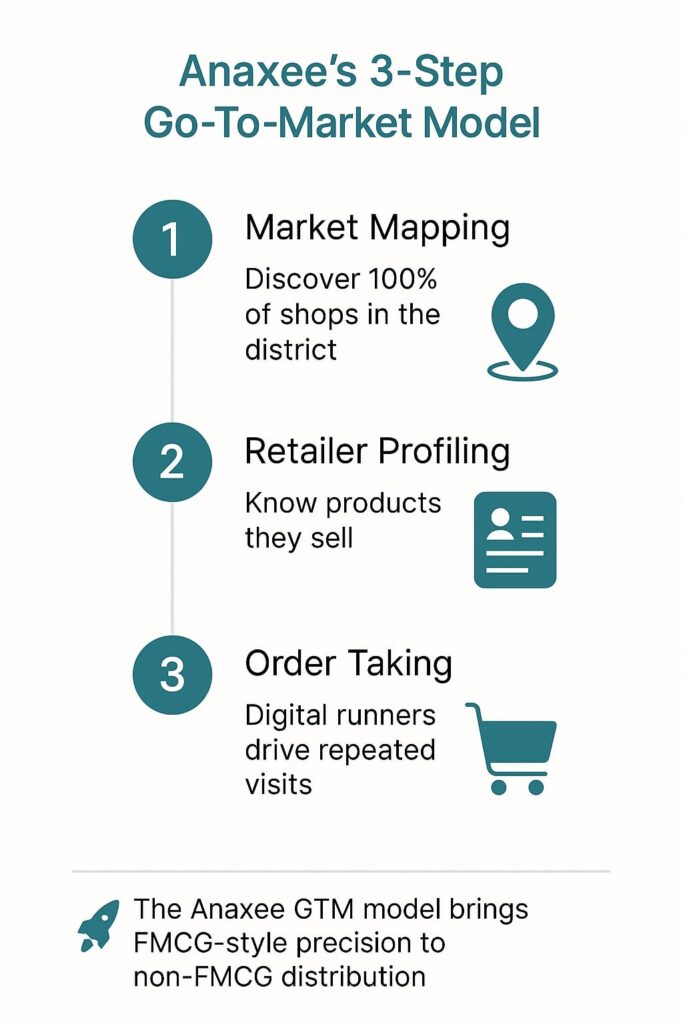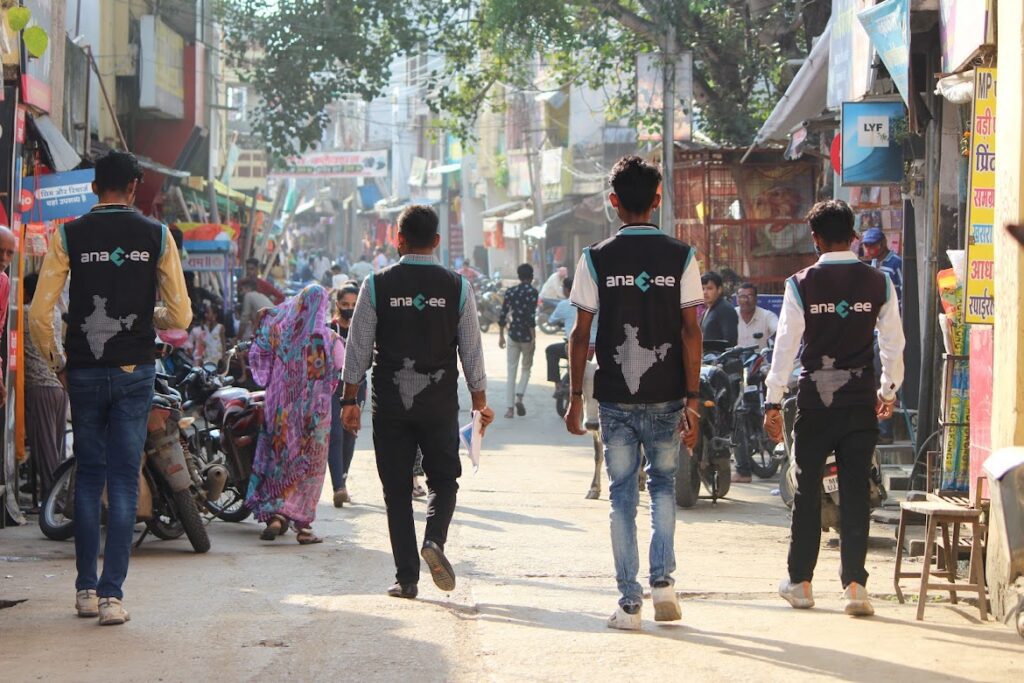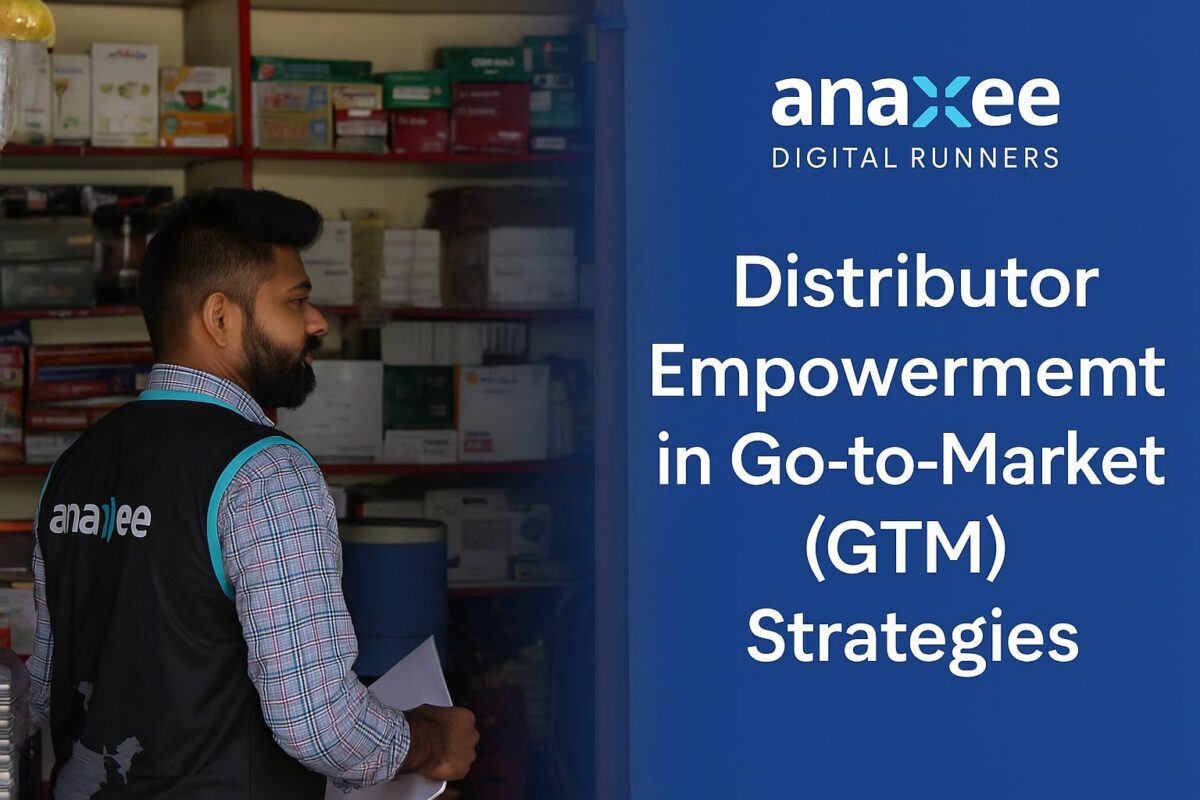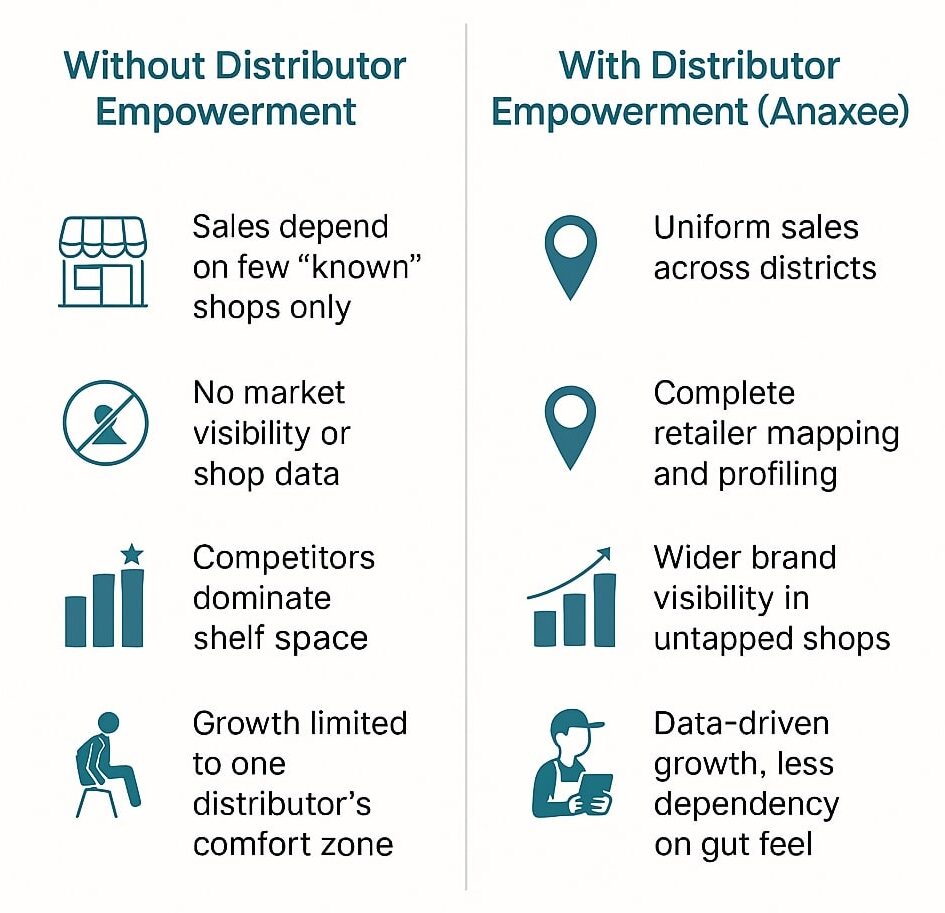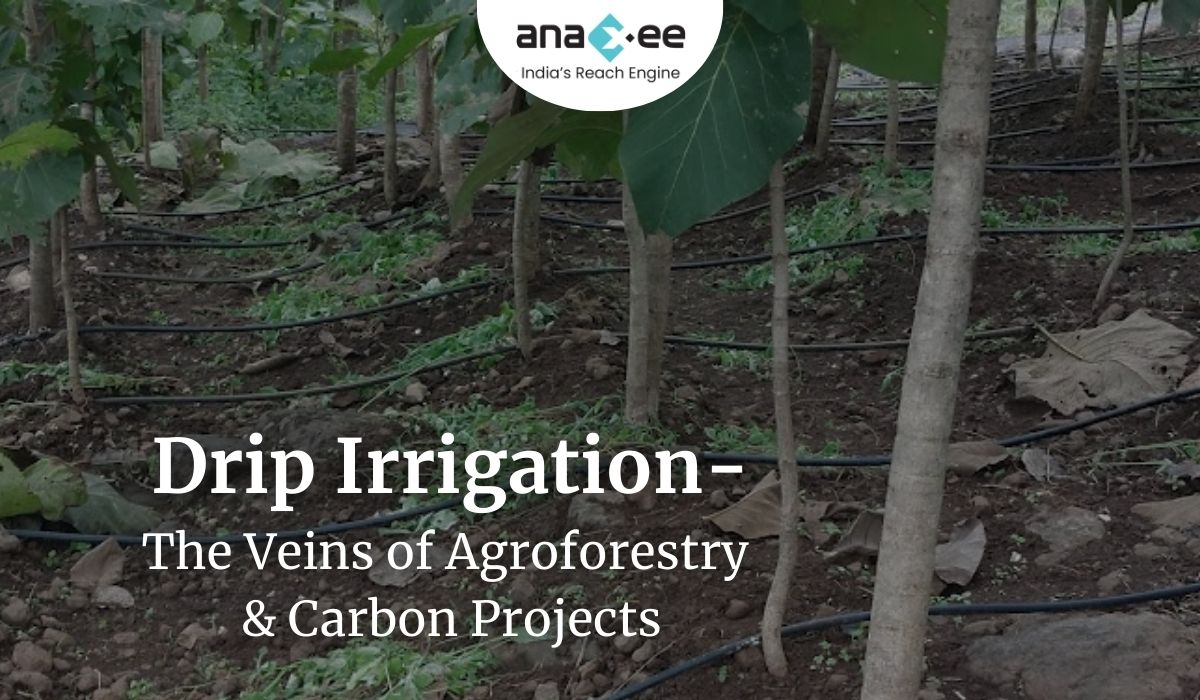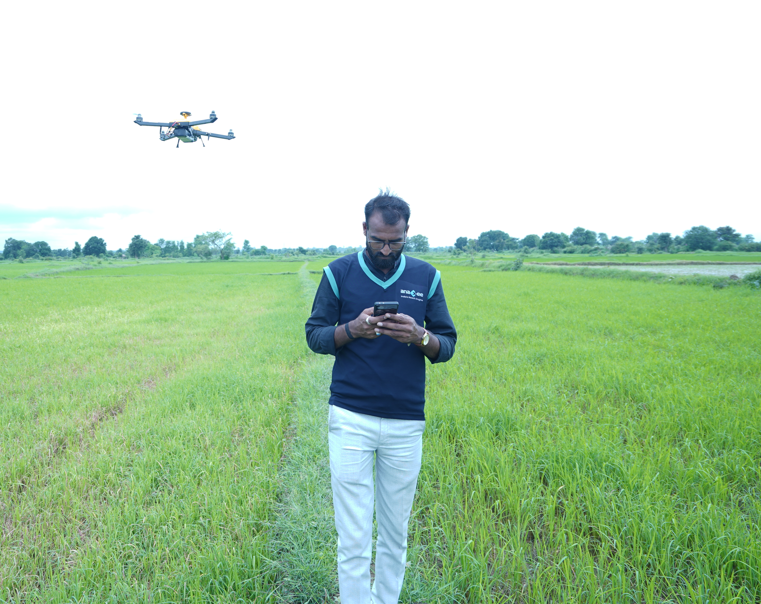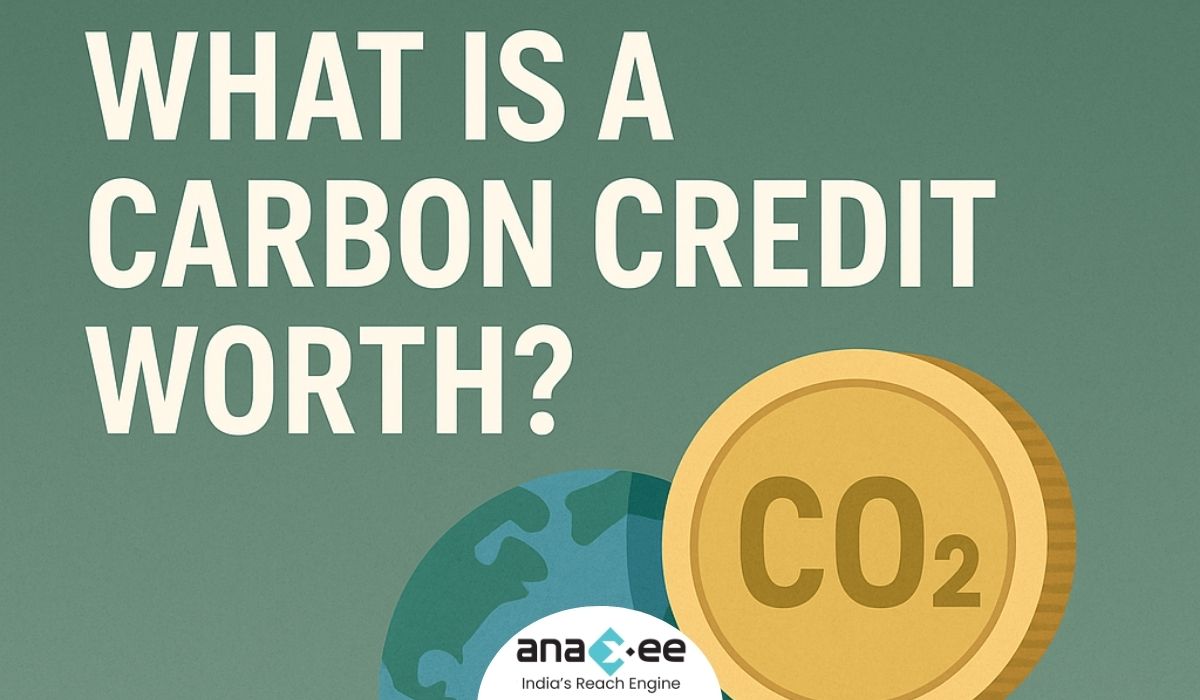Carbon Finance in Emerging Markets: Pathways to Capital for Nature-Based Projects
Introduction:
Carbon finance has become one of the most important tools in the global climate fight. At its core, it is about putting a price on carbon emissions and channeling that money into activities that avoid or remove greenhouse gases. While developed economies have compliance markets and government-led schemes, emerging markets often rely heavily on the voluntary carbon market (VCM). Here, projects that conserve forests, restore ecosystems, or introduce clean technologies can sell carbon credits to corporates and investors.
But there’s a problem. Despite the availability of capital worldwide, projects in Africa, Asia, and Latin America still face serious barriers. Investors hesitate due to risks like unclear land tenure, political instability, and lack of precedent deals. This creates a paradox: projects need capital to reduce risks, yet capital only arrives after de-risking. The Carbon Finance Playbook highlights ways to break this deadlock and unlock funding for nature-based solutions (NbS).
In this blog, we’ll unpack how carbon finance works in emerging markets, why it matters, the types of projects attracting capital, and the strategies that can make financing more accessible.
Why Carbon Finance Matters for Emerging Markets
Emerging economies are home to vast natural resources — forests, mangroves, peatlands, and biodiversity hotspots. These landscapes store massive amounts of carbon. Protecting or restoring them is crucial for meeting the Paris Agreement targets. Yet, these same regions face underdevelopment, poverty, and limited government funding for conservation.
Carbon finance helps bridge the gap by:
- Channeling private capital into projects that historically depended on philanthropy.
- Supporting co-benefits such as green jobs, improved health (via clean cookstoves), and biodiversity protection.
- Helping corporates in developed countries meet net-zero targets by purchasing credits.
Currently, nature-based solutions receive only about 2% of global climate finance, even though they could deliver over one-third of required mitigation outcomes. This imbalance shows why carbon markets are critical.
Types of Carbon Projects in Emerging Markets
Carbon projects are broadly divided into two categories:
-Emissions Removal: Projects that take carbon out of the atmosphere (e.g., afforestation, blue carbon, biochar).
-Emissions Avoidance: Projects that prevent emissions from happening (e.g., REDD+, improved cookstoves, solar irrigation).
Common Project Types:
-REDD+: Reducing deforestation by incentivizing forest protection.
-ARR (Afforestation, Reforestation, and Revegetation): Large-scale tree planting and ecosystem restoration.
-Blue Carbon: Restoring mangroves and wetlands to sequester CO₂.
-Cookstoves & Water Filters: Providing households with alternatives that reduce wood and charcoal burning.
-Solar Irrigation: Replacing diesel pumps with solar, cutting emissions and improving farm resilience.
These projects are not only about carbon. They deliver co-benefits like improved livelihoods, women’s empowerment, and reduced air pollution.
Project Archetypes and Cashflow Models:
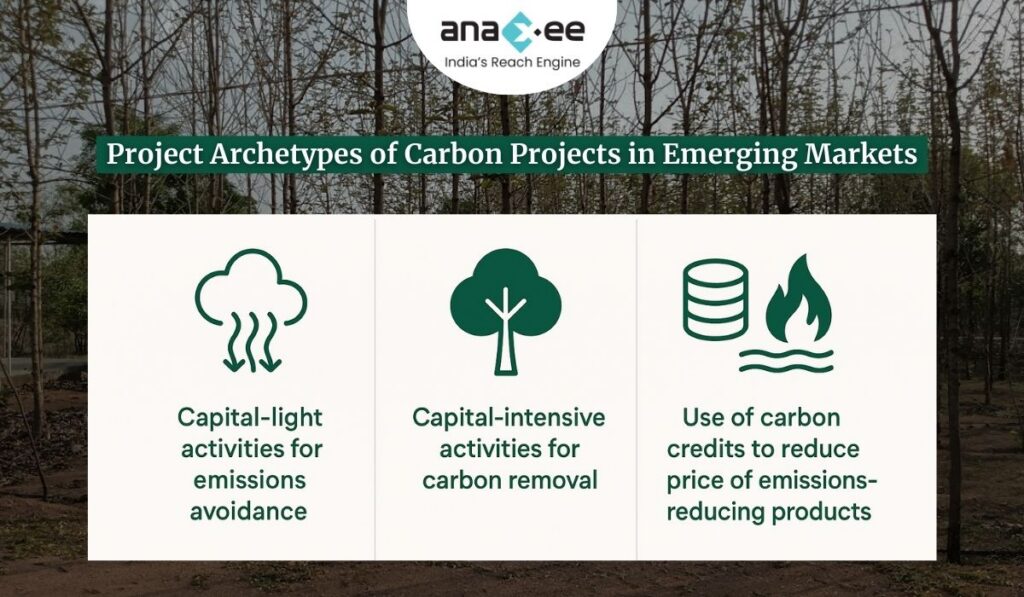
The Playbook identifies three main archetypes for carbon projects in emerging markets:
- Capital-Light Projects (Avoided Emissions):
-Example: REDD+ forest protection.
-Low upfront costs (~10–20% of total) but steady revenues over 20 years.
-Break-even in 3–7 years depending on carbon price. - Capital-Intensive Projects (Carbon Removal):
-Example: Reforestation and blue carbon projects.
-High upfront costs (50–80% in first 5 years).
-Break-even after 8–15 years, but generate long-term ecological and social benefits. - Product-Linked Projects (Carbon Subsidies):
-Example: Cookstoves or solar irrigation.
-Carbon credits reduce product prices, expanding adoption.
-Immediate impact but dependent on accurate monitoring of usage.
Understanding these models is crucial for investors to tailor financing structures to project timelines.
Barriers to Carbon Finance in Emerging Markets
Despite the potential, several barriers block capital flow:
- Political and Regulatory Risks: Land tenure disputes, weak governance, or unclear carbon rights.
- Price Uncertainty: Voluntary carbon prices range widely, making financial forecasts unstable.
- Lack of Precedent Deals: Investors lack trust in new geographies with limited track records.
- High Transaction Costs: Feasibility studies, community engagement, and MRV can cost hundreds of thousands upfront.
- Perceived Integrity Risks: Negative media around “over-credited” projects deters buyers.
These barriers often discourage early-stage investment, leaving projects in a catch-22.
Carbon Pricing in Emerging Markets
Unlike compliance markets with regulated prices, the VCM is fragmented. Prices depend on:
-Project type (removal vs avoidance).
-Geography (Latin American ARR projects often trade higher than African ones).
-Co-benefits (projects verified for biodiversity and community development attract premiums).
-Vintage (older credits trade lower).
As of 2023:
-REDD+ credits ranged from $1.77 to $17.91 per ton.
-Premium removal credits could fetch $20–$40 per ton.
Future projections vary widely:
-Conservative forecasts: $50–$80/tCO₂e by 2050.
-Optimistic scenarios: $150–$200+/tCO₂e by 2050.
For developers, negotiating offtake agreements or pre-purchase contracts is a way to secure upfront capital, though often at discounted rates.
Benefit Sharing with Communities
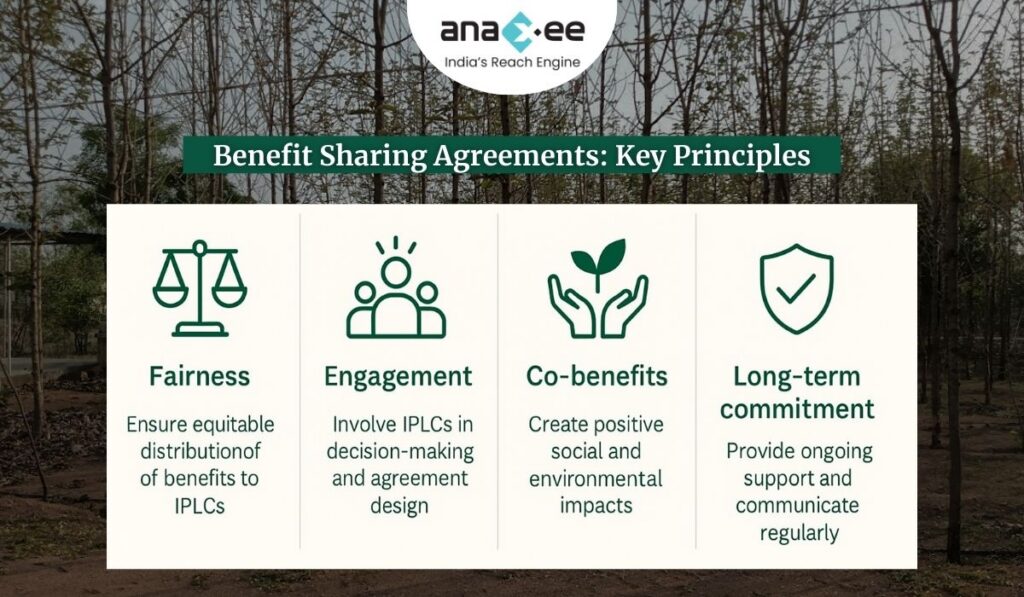
Local communities and Indigenous Peoples (IPLCs) are central stakeholders. Without their buy-in, projects lack credibility and durability. Benefit Sharing Agreements (BSAs) outline how carbon revenue is distributed.
Best practices include:
-Fixed Payments: Early support for communities before credits generate income.
-Variable Payments: A share of revenue once credits are sold.
-Transparent Governance: Clear structures on who decides how funds are used.
-Non-Monetary Benefits: Infrastructure, healthcare, or training.
A fair BSA reduces conflict and enhances long-term sustainability.
Risk Mitigation and Insurance
Investors need confidence that projects won’t collapse due to unforeseen risks. Tools include:
-Political Risk Insurance: Covers expropriation, violence, or government interference.
-Physical Risk Insurance: Protects against fires, floods, or droughts.
-Carbon-Specific Insurance: New products guarantee delivery of credits even if projects underperform.
By blending insurance with concessional finance (grants, low-interest loans), projects can unlock more commercial capital.
Investment Structures and Capital Sources
Carbon projects typically draw from a mix of funding sources:
-Strategic Investors: Companies relying on credits as their core revenue.
-Grants & Concessional Capital: Early-stage de-risking and innovation support.
-Commercial Finance: Still limited, but growing with recent deals in Africa and Asia.
-Pre-Sale of Credits: Selling future credits to raise capital upfront.
-Blended Finance: Combining donor funds with private capital to spread risk.
For example, SunCulture in Kenya uses carbon credits to subsidize solar irrigation systems, paired with results-based finance.
Mozambique Case Study
Mozambique shows both the promise and challenges of emerging market carbon finance:
-60+ registered projects with Verra and Gold Standard (cookstoves, water, forestry).
-Abundant natural resources but vulnerable to extreme weather.
-Complex land tenure laws and evolving carbon rights.
-Supported by the African Carbon Markets Initiative (ACMI) to clarify regulations.
Lessons: success requires strong governance, community engagement, and clear regulation.
The Way Forward
For carbon finance to scale in emerging markets, several steps are needed:
- Stronger Integrity Standards: Aligning with ICVCM’s Core Carbon Principles.
- Innovative Insurance and De-risking Tools: To reduce investor hesitation.
- Transparent BSAs: Ensuring fair benefit-sharing with communities.
- Regulatory Clarity: Governments must set clear carbon rights and Article 6 rules.
- Catalytic Capital: Donor and philanthropic finance must pave the way for private investors.
Conclusion
Carbon finance has the power to transform emerging markets. By protecting forests, restoring degraded land, and promoting clean energy technologies, these regions can both fight climate change and lift communities out of poverty. But unlocking this potential requires bridging the trust gap between developers and investors, building integrity into projects, and designing financial structures that share benefits fairly.
The future of carbon finance in emerging markets is not just about tons of CO₂. It’s about people, ecosystems, and creating a more sustainable global economy.
About Anaxee:
Anaxee drives large-scale, country-wide Climate and Carbon Credit projects across India. We specialize in Nature-Based Solutions (NbS) and community-driven initiatives, providing the technology and on-ground network needed to execute, monitor, and ensure transparency in projects like agroforestry, regenerative agriculture, improved cookstoves, solar devices, water filters and more. Our systems are designed to maintain integrity and verifiable impact in carbon methodologies.
Beyond climate, Anaxee is India’s Reach Engine- building the nation’s largest last-mile outreach network of 100,000 Digital Runners (shared, tech-enabled field force). We help corporates, agri-focused companies, and social organizations scale to rural and semi-urban India by executing projects in 26 states, 540+ districts, and 11,000+ pin codes, ensuring both scale and 100% transparency in last-mile operations.
Need help with the Dmrv or Implementation of your Carbon Climate Projects, Connect with us at sales@anaxee.com
